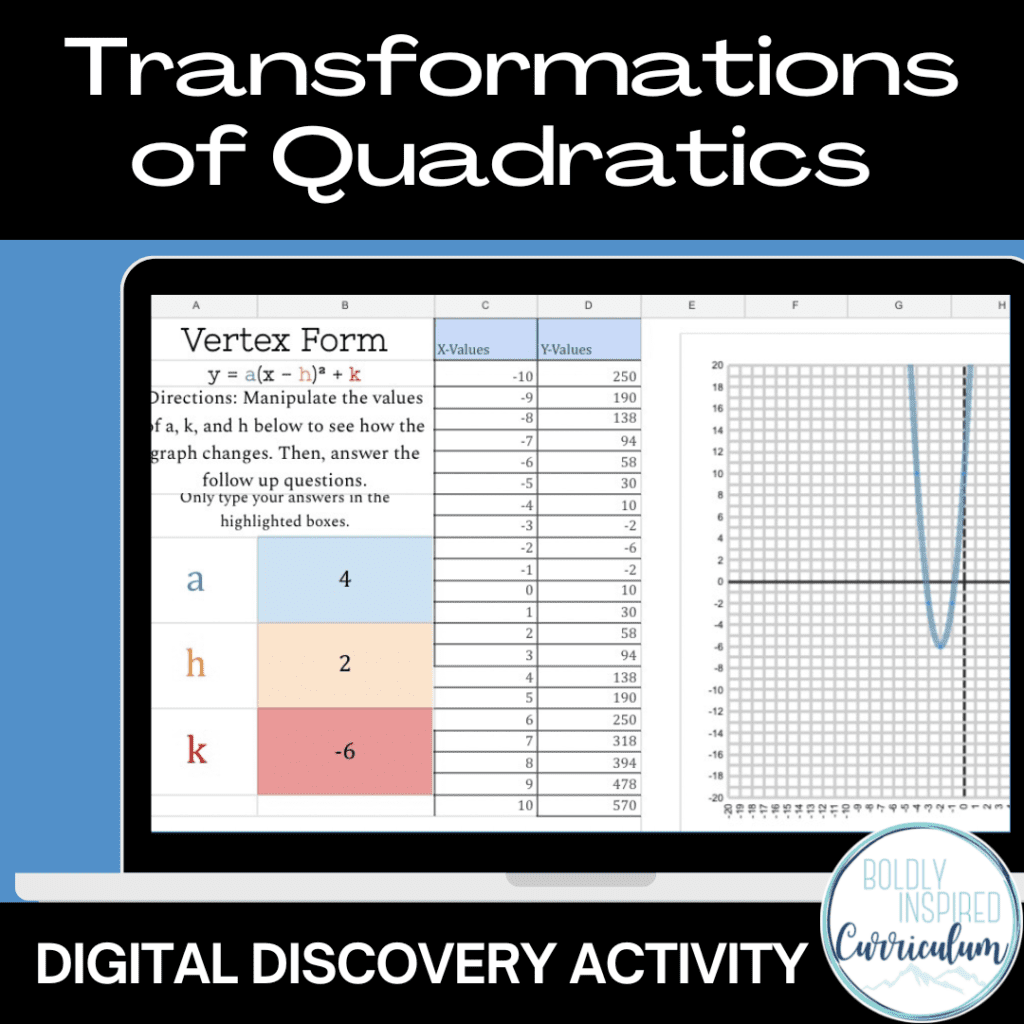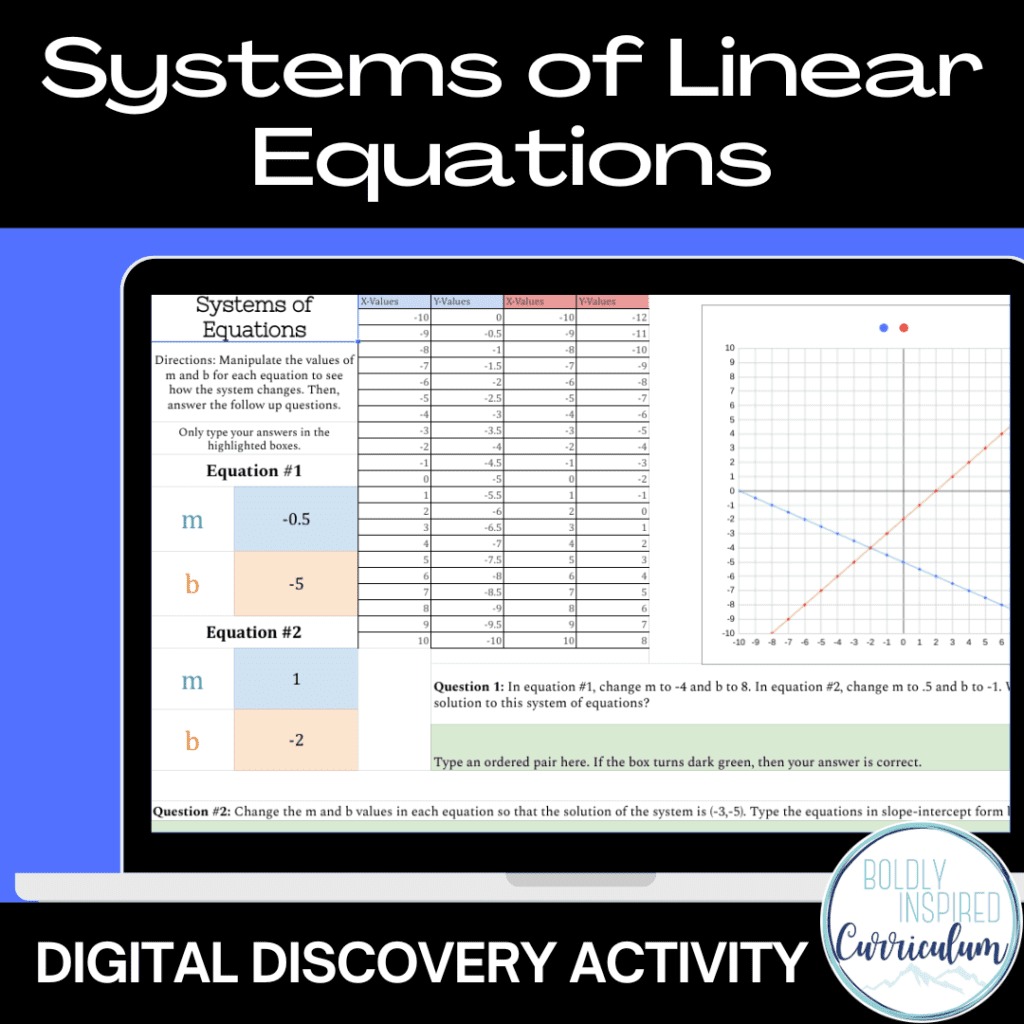
Seeing patterns in transformations without relying on memorizing formulas can be a challenge for many students. Digital discovery graph activities are a great way to review transformations of functions.
Rather than having students draw out graphs for each transformation of a parent function, these precoded activities save time and keep students more engaged.
Table of Contents
ToggleLooking for more digital activities? Check out these blog posts ↓

How does it work?
These Google Sheets activities are precoded using equations and an XY table to create editable graphs. The students will change each of the highlighted values and observe the results. All of the graphs start out with the parent function and transforms when the equation is altered.

Image 1
On Image 2, the values a and k are changed to 5 and -5, respectively. Notice how the graph changes automatically without having to change the x and y values manually.

Image 2
Assessing understanding of transformations
As students are watching the transformations on the graph, there are reflection questions for them to answer about their observations. These questions ask the students to define variables, make note of negative numbers and fractions, and record their overall observations.

Image 3
When to use discovery graphing activities
These discovery graphing activities are super versatile and can be used in a variety of ways in your math classroom! Here are a few examples of how you can use them.
1. Introducing transformations or a new parent function
2. Group work
3. Quiz review
4. Homework – students can use the graph to check their work if they are being asked to graph functions by hand
5. Exit ticket – you can add or take away reflection questions to customize this activity to meet the needs of your lesson





